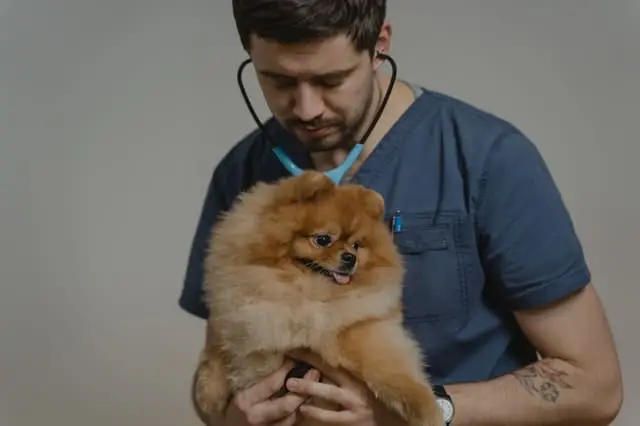Cauda Equina Syndrome or Degenerative Lumbosacral Stenosis in dogs, is one of the most frequent pathologies in some breeds of dogs.

Anyone living with a four-legged friend is aware that the latter must face certain pathologies during its life, and it is our job to take care of them.
In this article we will address a pathology that can mainly affect some breeds of dogs, the Cauda Equina Syndrome , also known as Degenerative Lumbosacral Stenosis of the dog.
Cauda Equina syndrome in dogs: what it is and how to recognize it

The Syndrome of Cauda Equine in dogs is a very common disease that affects mainly older dogs.
This Syndrome, also known as Degenerative Lumbosacral Stenosis of the dog, is a neurological pathology and causes in addition to severe lumbar pain also various motor disorders.
This pathology can be both congenital , i.e. inherited from birth, and acquired , i.e. found over the years, especially in older dogs.
In this last case both the nerves are compressed between the seventh lumbar vertebra and the sacrum. These nerves are what make the dog move its hind legs and tail, and that the abdominal organs can function properly.
For this reason, the main symptoms of Cauda Equina Syndrome in dogs are:
- Backache
- Sore hind limbs, including the tail
- Difficulty in jumping
- Difficulty getting up
- Difficulty or refusal to take the stairs
- Incontinence
These symptoms occur gradually and if not communicated in time to the veterinarian, with the worsening of the situation, the specialist may have difficulty in diagnosing the disease by confusing it with hip dysplasia in the dog and consequently prescribing the wrong therapy.
The Cauda Equina Syndrome can be easily found in the following dog breeds:
- German Shepherd
- Golden Retriever
- Bernese Mountain Dog
- Labrador Retriever
- Rottweiler
- Boxer
- Poodle
Degenerative lumbo-sacral stenosis in dogs: diagnosis and treatment
To diagnose Degenerative Lumbosacral Stenosis in dogs, the veterinarian will first of all carry out a physical visit to our four-legged friend.
This visit will consist in gently touching dogs entire spinal column, after which it will raise the hind limbs, and then establish which other tests may be useful in diagnosing the pathology. These exams are:
- Blank radiographic examination (to see the spine)
- Tac
- Myelography
- Electromyography
- Magnetic resonance
- Epidurography
Depending on the severity of the situation, therefore depending on the compression of the spinal cord, different therapies are carried out.
If the situation is not serious, the veterinarian can prescribe anti-inflammatory and analgesics to the dog, and absolute rest for it for at least 6 weeks.
In the event that this syndrome has caused neurological problems to the dog or in any case a very intense pain, the veterinarian could intervene surgically. After the operation, the dog must rest for at least a month and follow anti-inflammatory therapy.
